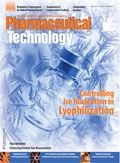Academic and Public Partnerships in Solid-State Chemistry
Solid-state chemistry is an important part of drug development, and public research is advancing the field.
Although the actual synthesis of an API is crucial, it is not the exclusive consideration in API development. In addition to producing an API with high purity, yield and stereoselectivity, an API must be able to remain stable during storage and distribution and have the desired drug mechanism once administered to a patient. Solid-state chemistry is an important part of drug development, and public research is advancing the field.
Researchers at the Institute of Chemical and Engineering Sciences (ICES) at Singapore's Agency for Science, Technology, and Research (A*STAR) recently reported on a novel method for producing cocrystals. The researchers discovered that adding water droplets can help form cocrystals of caffeine. Caffeine is unstable to humidity and cocrystal formation is possible with biocompatible compounds such as 4-hydroxybenzoic acid (4HBA). Previous research showed that computer models could predict cocrystals of caffeine and 4HBA in the ratio of 1:1, which would be the form with the most stable structure. To date, researchers had only been able to produce 2:1 and 1:2 co-crystals, according to information from A*STAR (1).
The ICES researchers successfully formed 1:1 cocrystals of caffeine and 4HBA in the form of a monohydrate. By grinding together a 1:1 mixture of the two components with two drops of water, a crystal structure was formed in which each pair of crystallization partners is partly held together by a water molecule. The key to the water's ability to produce the 1:1 cocrystal is its capacity to both donate and accept hydrogen bonds, the intermolecular force that holds cocrystals components together. In the case of the caffeine-4HBA cocrystal hydrate, unused hydrogen-bond acceptors and donors are satisfied by forming hydrogen bonds with the water molecule. Without water, the number of hydrogen-bond donors and acceptors is unbalanced, resulting in the preferential formation of the 2:1 and 1:2 crystals instead, according to the A-STAR information. The researchers have also applied the process to other APIs. They generated a 1:1 cocrystal hydrate of 4HBA with piracetam, a cognitive-enhancing drug. The results suggest that forming hydrates offers an alternative way to generate cocrystals with particular ratios of constituents, expanding the options for forming pharmaceutical materials.
The Synthesis & Solid State Pharmaceutical Center (SSPC) at the University of Limerick in Ireland was recently one of seven research centers that received part of an EUR 300 million ($391 million) investment through the Science Foundation Ireland's (SFI) Research Centers Program. SFI is the national research foundation in Ireland, and the funding represents funding from both SFI and private funding from industry. SSPC is a collaboration between 17 companies and academic institutions. These groups have expertise in process modelling and design, scale-up, computational fluid dynamics, in situ solution and solid-phase monitoring, crystallography and powder characterisation. The center's goal is to rationally design solid-state pharmaceutical materials in the required physical and chemical forms for advanced formulation and drug-delivery systems.
Reference
1. S. Aitipamula et al., Cryst. Eng. Comm. 14 (7), 2381–2385 (2012).

Pharmaceutical Tariffs Are Imminent: How Industry is Bracing for Impact
April 16th 2025On April 14, 2025, the Trump Administration launched a national security-driven investigation into pharmaceuticals, a move that will likely result in tariffs being placed on pharmaceutical drugs, ingredients, and other components that are imported from outside of the United States.
Drug Solutions Podcast: A Closer Look at mRNA in Oncology and Vaccines
April 30th 2024In this episode fo the Drug Solutions Podcast, etherna’s vice-president of Technology and Innovation, Stefaan De Koker, discusses the merits and challenges of using mRNA as the foundation for therapeutics in oncology as well as for vaccines.